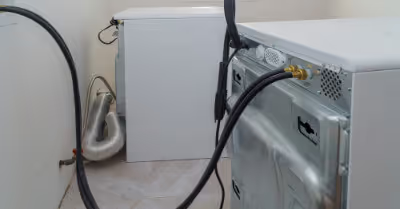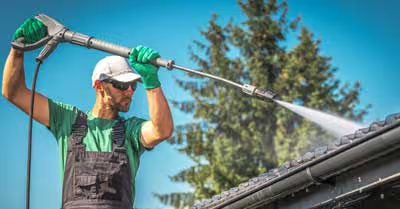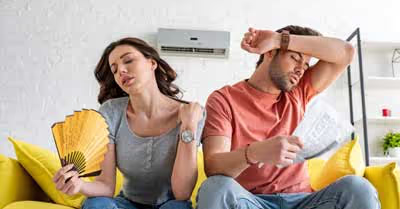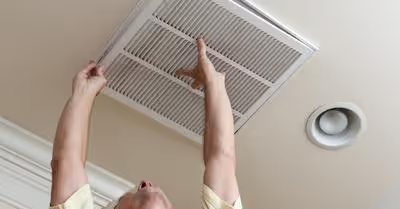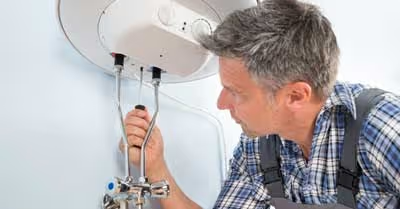Table of Contents
Why Is My Lawn Yellow?
There can be different reasons why your lawn is yellow. One of the most common cause is improper lawn care practices. No matter the grass type you have planted, it may turn yellow without proper care. If you are trying to turn your grass green again, here are some factors you might have to address.
Too Much Nitrogen in the Soil
One of the most common causes of your lawn to become yellow is excess nitrogen. Dog urine or giving too much fertilizer to your garden can raise the level of nitrogen in the soil.
When the soil receives too much nitrogen, its pH tends to lower (it becomes more acidic), which might cause the roots of your lawn to burn. Root damage can affect the ability to uptake other nutrients and water.
Dog urine is known to be high in nitrogen, which causes your lawn to get "burn" spots where a dog pees. Train your dog to do his business in another part of your garden.
Fertilizers contain nitrogen as it enhances the lush and healthy growth of your lawn, but too much of it might be counterproductive.
You need to be extremely careful when using synthetic fertilizers, as they contain several chemicals that might harm your lawn. If you notice the yellowing of leaf beads, the tops of the leaves getting brown, or that your grass is growing particularly slowly, you might be giving too much fertilizer to the soil. That will result in high levels of nitrogen. To avoid nitrogen excess, make sure you dilute the fertilizer in water and that you read the instructions found on the label. Also, you can opt for organic fertilizers that won't burn your lawn.
Heat And Sunlight
During the summer, it is common to experience more problems with your lawn. Areas that are exposed to excessively hot weather and sun all day long are more prone to dry out. Too much heat and dryness can cause stress to the soil, which will turn your lawn yellow. Depending on where you live and the type of grass in your garden, be careful with giving it enough water. Ensure you water your lawn frequently and abundantly when needed, or you'll notice your grass getting yellow within a few days of heat.
If you want to reduce the problems caused by heat in the summer season, it is good to encourage your grass to root more deeply. You can do so by providing plenty of water to your garden less frequently. In this way, you'll incentivize the roots to grow downwards as they search for more water. Watering your turn in the morning will allow the water more time to dry over the day.
Overwatering
Water is essential for green and healthy grass, but don't overdo it! Too much water might prevent root development, which leads to lower oxygen levels in the soils. Without enough oxygen, the roots will not be able to uptake the necessary nutrients, causing your turf to turn yellow. Overwatering makes your lawn weaker and more susceptible to fungal diseases and insect infestation.
Feed your grass with enough water, but only when needed. A good rule of thumb is to water it when the two inches of superior soil is dry. In general, watering your lawn 2 to 3 times a week, preferably early in the morning or at night (to reduce evaporation) is more than enough.
Of course, if it has rained, it is best to stop watering for some time.
Possible Diseases and Pests
If you don't own a dog or if you know that the amount of water you are pouring into your lawn is sufficient, but you are still asking yourself "why is my lawn yellow", your garden might be discolored due to a pests attack or a disease.
Insects munching on the roots of your grass will affect its color. To find out whether the cause of faded and yellow turf grass are small insects, part the blades and look for larvae. Once you have identified what insect is causing damage to your lawn, use an insecticide specific to that pest.
If you don't see any insect or larvae eating your grass, the cause might be different. For instance, fungal diseases are common in turf. To deal with them, purchase a high-quality fungicide and give your lawn proper and regular mown, water and thatching. Lawn diseases are easily diagnosable as they manifest with patches of discolored turn that continue to expand into circles or irregular shapes.
Compacted Soil
Discolored grass might also happen in parts of the grass that gets lots of movement or where children play. That is because too much foot traffic on your lawn can cause the soil to become too compact, which prevents the water from getting to the roots, causing the grass to get yellow quickly.
To avoid such a problem, you should ensure proper aeration to your soil. You can do so using an aerator or using a garden fork from time to time to prod the ground. Either way, aerating your lawn is a hard job, but if you want green and healthy grass, it is essential.
Cutting the Grass Too Short
Mowing is essential for the health and looks of your lawn, but you should not overdo it. Don't fall into the trap of cutting your grass too short or too often. Indeed, mowing your lawn too much can leave it dry, which will cause it to discolor. You might notice discoloration only in certain areas soon after you've cut the grass: that is due to the unevenness of the ground. With the grass cut too short, your lawn won't get enough moisture. Allow the grass to grow longer and try to increase the cutting height of your mower on those areas that tend to get yellow due to unevenness of the ground.
Spilled Petrol
If you are using a petrol lawnmower, you must fill it up off the grass. Otherwise, chances are some petrol might spill on the lawn, which can cause the grass to turn yellow. In case you notice some fuel in your garden, ensure you clean it as soon as possible with water to dilute it and to prevent it from burning your grass. If a lot of petrol has fallen on your lawn, you might have to dig the area and reseed to have it green again.
How To Fix Your Yellow Lawn
On top of the quick solutions provided above, you should give your lawn good care, if you are looking to turn it green again. If you are trying to answer the question: "why is my lawn yellow" here are some tips you should take into consideration when trying to solve the problem.
Commit to giving a regular mow to your grass, but only when your lawn is dry. Also, ensure the drainage is good and aerate it to increase air circulation. If you notice excess grass clippings and fallen leaves, make sure you rake them up as they might be perfect homes for pests and cause diseases.
Another thing you should pay attention to when your grass is turning yellow is the concentration of iron and nitrogen in your soil. Iron deficiency might cause the grass to grow yellow, while nitrogen deficiency tends to cause stunted growth. If you identify what nutrient is lacking, you should treat it with the appropriate plant food or fertilizer.
If you notice your grass to turn yellow after mowing, the mower's blades you are using might be causing the problem. To incentivize your garden to become green, make sure you are using a mow with sharp enough blades. Also, mow at a height that is lower than your last mow, to allow greener shots to come up.
When your lawn has several dog urine spots, applying a dog urine neutralizer can be a good idea. If you wait too long, the grass won't grow back, so make sure you add neutralizer to the area as soon as your pet pees. Otherwise, if the damage is considerable, you'll need to reseed or resod your lawn.
Recent Articles




